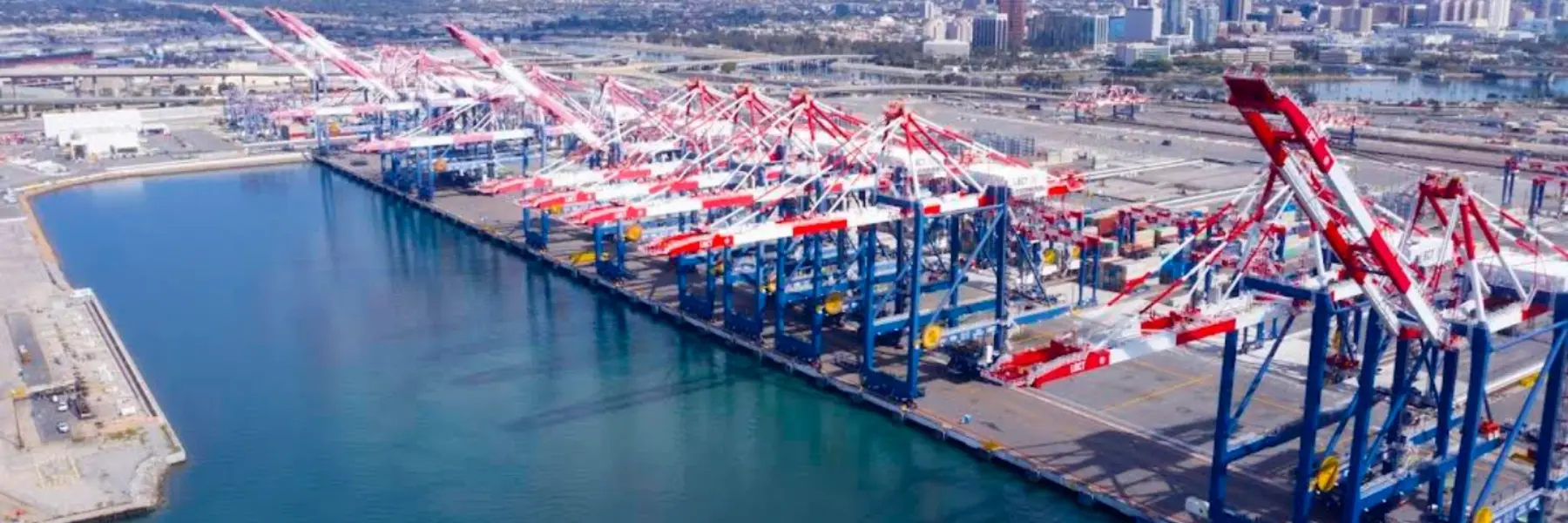 Complete Guide to Shipping from China to Washington: Rates, Schedules & Customs Tips
Complete Guide to Shipping from China to Washington: Rates, Schedules & Customs Tips
Washington State—home to tech giants, agricultural leaders, and bustling ports—relies heavily on global logistics to import goods from China, making shipping from China to Washington a critical link for its economy. As a Pacific Northwest hub, Washington’s cargo flows through major international seaports (Port of Seattle, Port of Tacoma) and key airports (Seattle-Tacoma International Airport), connecting Chinese manufacturers to local tech, agriculture, and manufacturing sectors. To navigate this route efficiently, understanding Ocean FCL, Ocean LCL, Ocean Freight, Airfreight costs, seasonal ship schedules, and state-specific customs rules is essential. Partnering with a trusted China Freight forwarder like WanHaoFreight forwarder simplifies these steps, cutting costs and minimizing delays from Pacific weather or port congestion. This guide covers everything you need to know about shipping from China to Washington.
Ocean Freight from China to Washington: FCL vs. LCL
Ocean Freight dominates shipping to Washington, accounting for over 75% of cargo—driven by its cost-effectiveness for bulk goods like tech equipment, agricultural machinery, and consumer electronics. It is split into two primary modes: Ocean FCL (Full Container Load) and Ocean LCL (Less than Container Load), each tailored to different shipment sizes and business needs.
Ocean FCL: Ideal for Bulk Tech & Agricultural Cargo
Ocean FCL involves booking an entire shipping container (10+ cubic meters/CBM) for exclusive use, perfect for Washington’s tech firms importing semiconductor parts, farms receiving irrigation equipment, or retailers restocking pallets of electronics. Key benefits include faster transit (no waiting for cargo consolidation), lower damage risk (sealed containers protect sensitive tech gear), and predictable pricing (inclusive of inland transport to cities like Seattle, Spokane, or Tacoma).
Rates for Ocean FCL from China to Washington depend on three factors: Chinese origin port, U.S. hub seaport, and container size. The most common sizes are 20-foot (20GP) and 40-foot (40GP/40HQ). From Shanghai Port (a top international seaport), a 20GP container to the Port of Seattle costs $1,700–$2,500, plus $120–$220 for truck transport to downtown Seattle (a 30-minute drive). A 40HQ (high cube, for bulky machinery or tech inventory) ranges from $2,200–$3,200, plus $180–$280 for inland transit. From Shenzhen Port (another major international seaport), ocean rates to Seattle are $110–$270 cheaper, thanks to frequent trans-Pacific sailings. Seasonal peaks (May–August, ahead of tech product launches and harvest seasons) raise ocean rates by 18–28%, while off-peak (December–February) offers 10–15% savings.
WanHaoFreight forwarder specializes in Ocean FCL solutions for shipping from China to Washington. Their team negotiates with West Coast carriers (Matson, Hapag-Lloyd—experts in Pacific routes) for competitive hub seaport rates and partners with Washington-based trucking firms (familiar with I-5 and I-90 corridors) for expedited delivery to industrial parks. For tech companies with monthly component shipments, WanHaoFreight offers long-term contracts to lock in combined ocean-inland costs.
Ocean LCL: Cost-Saver for Smaller Shipments
If your cargo is less than 10 CBM (e.g., small-batch e-commerce goods for Seattle’s local shops, replacement parts for agricultural machinery, or medical supplies for Spokane clinics), Ocean LCL is the optimal choice. With LCL, your goods are consolidated with other shippers’ cargo at the Chinese origin port, spreading costs across parties—ideal for Washington’s small businesses and startups.
Ocean LCL rates from China to Washington are calculated by chargeable weight (whichever is higher: actual weight or volume weight). From Guangzhou Port (a key China Freight forwarder hub), rates to the Port of Tacoma (a major Washington seaport) are $75–$115 per CBM, plus $150–$250 for truck transport to Bellevue (a tech hub near Seattle). For example, shipping 5 CBM of wireless speakers (for Washington’s retail stores) from Guangzhou to Bellevue would cost $375–$575 (ocean to Tacoma) + $150–$250 (inland) = $525–$825. Additional fees include consolidation ($45–$85), documentation ($30–$50), and seaport handling ($70–$100). Unlike many freight forwarders, WanHaoFreight provides all-inclusive quotes—no hidden surcharges for last-mile delivery to Washington’s urban or rural businesses.
Transit time for Ocean LCL is 26–34 days (18–24 days ocean to hub seaport + 4–10 days inland), compared to 22–28 days for FCL. If time isn’t critical (e.g., pre-season agricultural supplies), LCL is a budget-friendly option for small-scale shipping from China to Washington.
Ocean Freight Schedules: China to Washington
Ship schedules to Washington are consistent year-round, thanks to its well-connected Pacific seaports and weekly trans-Pacific sailings from major Chinese ports. Most carriers prioritize Washington’s ports for tech and agricultural cargo, ensuring reliable flow.
From Shanghai to Port of Seattle: Carriers like CMA CGM offer weekly direct sailings, with a 18–22 day ocean transit time. Inland transport to Seattle’s core takes 1–2 days, totaling 19–24 days. From Shenzhen to Seattle: Weekly sailings take 20–24 days ocean + 1–2 days inland (total 21–26 days).
From Shanghai to Port of Tacoma: Weekly sailings take 19–23 days ocean, with inland transport to Tacoma or Olympia adding 1 day. Total transit time: 20–24 days. Rates here are $100–$200 higher than Seattle, but Tacoma’s less congested terminals speed up unloading.
From smaller Chinese ports (Xiamen, Ningbo) to Washington: Bi-weekly sailings take 22–26 days ocean, with cargo consolidating in Shanghai first. These routes suit businesses in China’s eastern manufacturing hubs shipping to Washington’s rural areas.
Weather is the biggest variable: Pacific storms (November–February) can delay sailings by 3–7 days, while peak tech shipping (April–June) may cause brief congestion in Chinese ports. WanHaoFreight forwarder provides real-time ship tracking for both ocean and inland stages, including weather alerts, so Washington businesses can adjust plans. Book 3–4 weeks in advance to secure preferred sailings—especially during harvest or tech launch seasons.
Airfreight from China to Washington: Speed for Urgent Cargo
Airfreight is critical for Washington’s urgent needs—such as emergency tech parts for Seattle’s startups, medical supplies for rural clinics, or perishable agricultural samples. Washington’s key airports (Seattle-Tacoma International Airport/SEA, Spokane International Airport/GEG) handle most air cargo, with short inland transport to other cities.
Airfreight Rates & Transit Time
Airfreight rates from China to Washington depend on weight, flight type, and airport choice. From major Chinese airports (Shanghai Pudong, Guangzhou Baiyun) to SEA: Direct cargo flights (12–14 hours) cost $3.60–$6.00 per kilogram. Non-direct flights (via San Francisco) cost $2.80–$5.00 per kilogram but add 1–2 days to transit. For example, shipping 80kg of emergency semiconductor parts from Shanghai to Seattle would cost $288–$480 (direct airfare) + $30–$70 (local delivery) = $318–$550.
From Shanghai to GEG (Spokane): Direct flights are rare, so cargo routes via SEA first—rates range from $3.90–$6.30 per kilogram, with 3-hour ground transport to Spokane adding $60–$100. Total transit time: 4–6 days.
Transit time for direct Airfreight is 3–5 business days (flight + customs + delivery); non-direct takes 5–7 days but saves 15–20%. WanHaoFreight forwarder partners with airlines serving Washington (Alaska Airlines, Delta, China Southern) to secure priority cargo space—critical during tech emergencies or medical shortages. They also offer temperature-controlled Airfreight for perishables (e.g., agricultural seeds) and door-to-door service, covering pickup from Chinese warehouses to delivery at Washington’s facilities.
Customs Clearance for Washington-Bound Cargo
Customs clearance for Washington shipments occurs at its seaports (Seattle/Tacoma) or airports (SEA/GEG), managed by U.S. Customs and Border Protection (CBP). Non-compliance can delay time-sensitive cargo—here’s how to ensure smooth processing:
Required Documentation
WanHaoFreight forwarder helps prepare these docs to avoid errors. For example, missing USDA permits for farm machinery can delay clearance by 5–7 days—their team knows Washington’s agricultural regulations and ensures compliance.
Tariffs & Duties
Tariffs on goods from China to Washington depend on HS codes:
Duties are based on FOB value. Washington has no state sales tax on most industrial goods, but retail items face a 6.5% state tax. WanHaoFreight assists with duty drawback—refunds for goods re-exported to Canada.
Compliance Checks
CBP focuses on high-risk cargo: tech goods (counterfeiting), medical supplies (safety), and agriculture (pest control). To avoid delays:
WanHaoFreight partners with Chinese labs to verify compliance pre-shipping, cutting inspection risk by 40–50%—critical for Washington’s time-sensitive industries.
How to Choose the Right Freight Forwarder for Washington
Washington’s diverse industries and Pacific location demand a forwarder with regional expertise. Here’s why WanHaoFreight stands out:
Expertise in China-Washington Routes
WanHaoFreight has 10+ years shipping to Washington, understanding its seaport dynamics, inland corridors, and industry needs (tech, agriculture). They navigate Pacific storms and prioritize urgent cargo.
Transparent Pricing & Easy Get A Quote
Their “Get A Quote” tool lets you input cargo details (size, weight, type) for a personalized quote within 24 hours—breaking down ocean/air, inland, and customs costs. No hidden fees.
Full-Service Support
WanHaoFreight handles end-to-end logistics: Chinese warehouse storage, cargo insurance, customs clearance, and delivery to Washington’s tech parks, farms, or clinics. They act as a single point of contact.
Conclusion
Shipping from China to Washington doesn’t have to be complex—with WanHaoFreight forwarder, you optimize costs, meet deadlines, and avoid customs headaches. Leverage Ocean FCL for bulk cargo, LCL for small shipments, or Airfreight for urgency. With transparent pricing, easy “Get A Quote” access, and Pacific Northwest expertise, WanHaoFreight lets you focus on growing your Washington business while they handle global shipping. Ready to start? Contact WanHaoFreight today for your personalized solution.
 Easy Shipping From Global, Save Cost
Easy Shipping From Global, Save Cost














